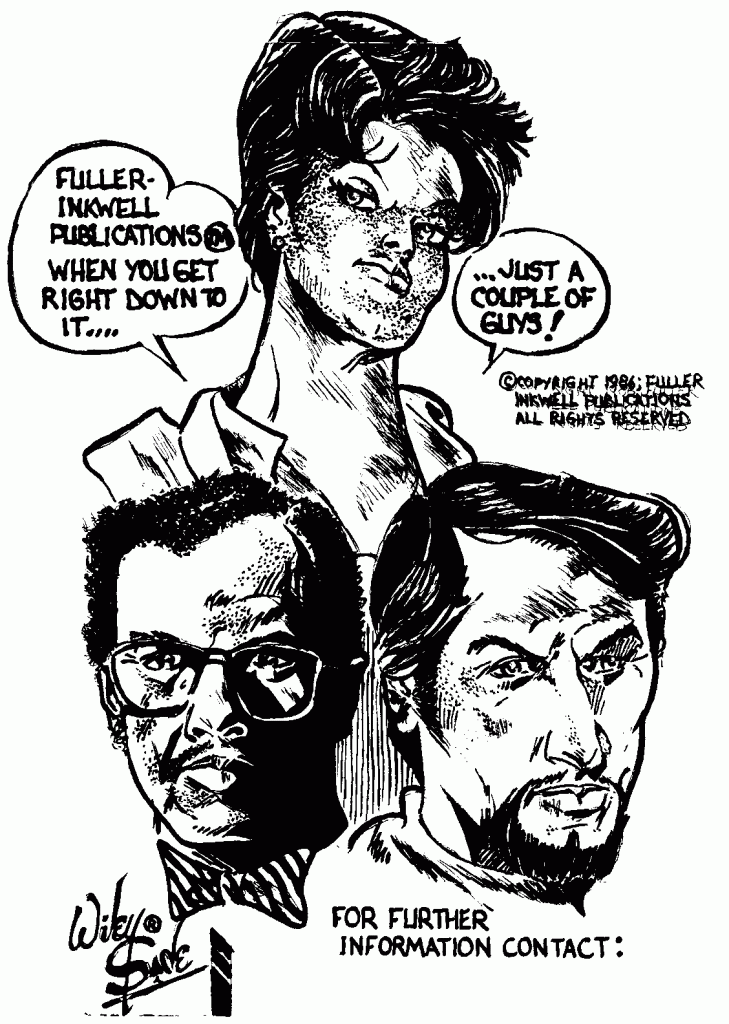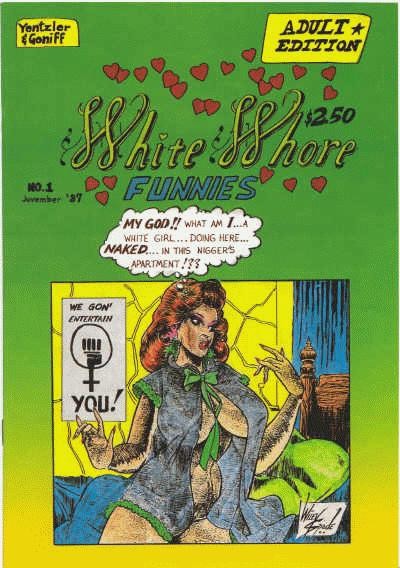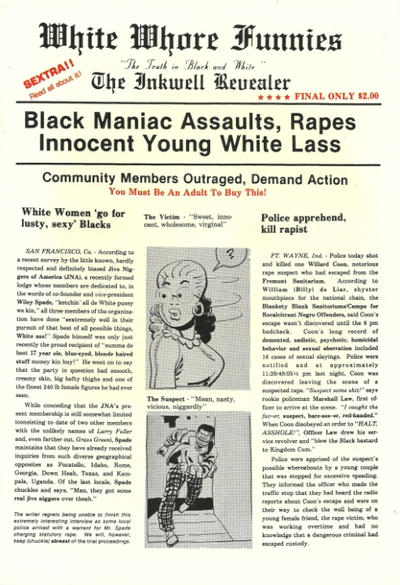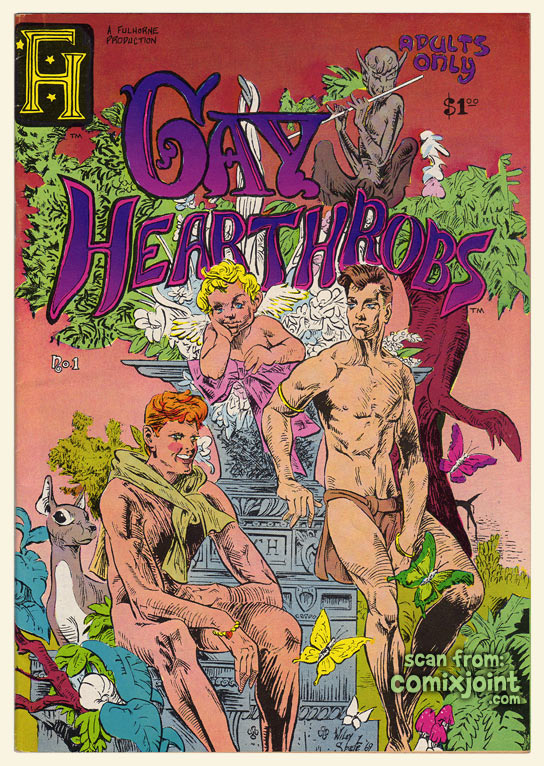In celebration of Black History Month, CBLDF has partnered with Black Nerd Problems to spotlight Black comics creators and cartoonists who made significant contributions to free expression. Visit CBLDF.org throughout the month of February to learn more!
Larry Fuller—a.k.a. A. Christian White—with his quick wit, eye for innovation, and keen sense of opportunity is regarded as one of the indisputable kings of the 1970s underground comix movement.
From Ebon to White Whore Funnies, Fuller wrote comics, drew comics, published comics, and would become one of the premier businessmen in an industry characterized by its fast, loose, and decidedly un-business-like attitude that arose out of the aftermath of the 1954 Comics Code. Fuller’s ability to effectively use satire to comment upon social issues such as race and sexuality would make him an influential and important icon not only in the Black, but also the LGBTQ comics communities.
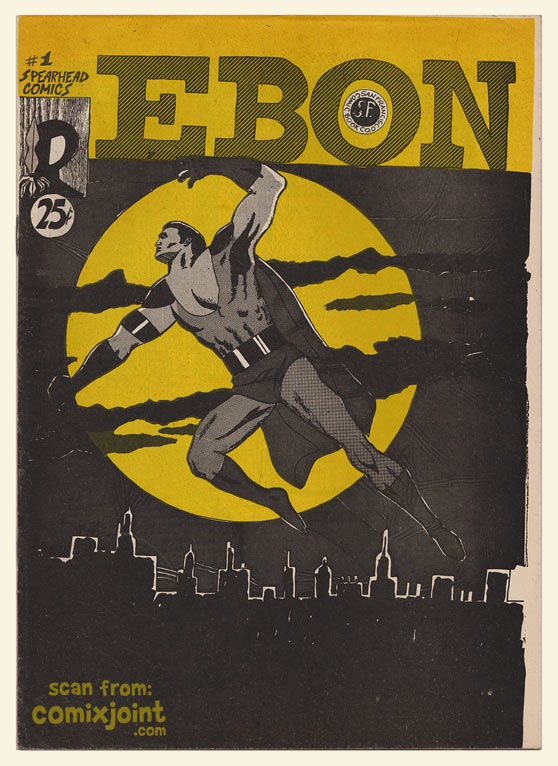
Ebon #1 (S.F. Comic Book Company, Jan. 1970), considered by many the first headlining Black superhero in American comics
Living in San Francisco, the heart of the underground comix movement, Fuller’s first foray into comics was with the publication of his black superhero book Ebon #1 in 1970. Considered by some to be the first American comic featuring a Black superhero protagonist (Marvel wouldn’t introduce their first Black superhero headliner until 1972 in Luke Cage, Hero for Hire) and even the first comic to be entirely written and drawn by a single Black creator, Ebon was Fuller’s homage to his childhood love of the medium.
“As a young boy, Larry Fuller was fascinated by the comic book superhero genre,” notes underground comixjoint, “but I imagine he wondered why there were no superheroes who matched the color of his own skin. But if Marvel and DC were blind to the need for a black superhero, Fuller was ready to fill the gap after he grew up.”
Although sales of Ebon #1 weren’t spectacular and the book was never serialized, that didn’t deter Fuller from continuing to produce comics. If anything, the experience that he gained working with publisher Gary Arlington, another key figure in the underground comix movement and owner of the first “comic shop,” probably gave him a better sense of the business of comics and planted the seeds which would later be sown into a successful career as a publisher.
The next few years were lean for Fuller. Although he contributed a story to Last Gasp’s 1971 anthology comics Laugh in the Dark #1, for the most part much wasn’t seen from the creator. “Fuller was a peripheral member of the comix scene,” writes comics historian Leonard Rifas. “Jay Kinney [another underground comix creator] remembers that Fuller did attend some comix parties and was on friendly terms with some cartoonists, but describes him as ‘a fringe member, at best, of a largely white movement.’”
This would all change in 1975 when Fuller would team up with fellow creator Raye Horne to form Ful-Horne Productions. Under his own publisher name, Fuller would produce the radical comix series White Whore Funnies,one of the “world’s sexiest and dirtiest comix.” Credited as Wiley Spade, Fuller didn’t hold back at all when producing this book. If the underground comix movement obliterated the strict rules and regulations regarding depictions of lust set by the Comics Code Authority by producing the most explicitly lurid comix possible, Fuller’s White Whore Funnies nuked the Code and took that luridness to a whole other — and much more complicated and critically complex — level.
From white “girls” having torrid affairs with Black “bucks,” to Black men fleeing the U.S. to avoid “white temptation,” White Whore Funnies was a comic not only overflowing with graphic sex, but was also thickly laden with interracial social and political commentary. In the introduction to White Whore Funnies #2, Fuller printed the following disclaimer:
Don’t go another further! Not until I warn you! I wanna confirm your suspicions and tell you that this is White Whore Funnies # two, the dirtiest comic ever published! Topic: that most sensitive of subjects—interracial sex!… So if you picked it up by mistake, put it down and move on ’fo’ you git your feelings hurt! Specially you jive ass white boys! This book might knock you down, tear you up and make a nigger lover out of your girl friend.
Fuller was not shy about addressing interracial issues. What set him apart from other comics creators of the time, though, was the masterful way that he used satire and parody to easily interweave these tough social conversations into comics that appealed to both Black and White readers. The stories may have been about sex, but they were good stories and had a quality feeling to them that you didn’t get from other underground comix.
“Frankly ahead of its time, a premiere effort from two hungry amateurs just beginning,” is how Fuller himself described the series. “Once advised by a distributor to ‘Make up something and do it good,’ I did just that. Never had so much fun, before or since. Not, at least, involving a comic book.”
White Whore Funnies was a comix series enjoyed by all discernable readers of porn. And unlike other commix, white were printed on cheap paper and circulated in niche communities, White Whore Funnies was distributed like a real publication to real businesses. With a slick glossy cover, Rifas points out that “White Whore had the distinction of being one of the few underground comix to make the leap into porn shop distribution.” Not only did it make its way into porn shops, it also made an impression. In 1989, a survey in Penthouse named the comic series #5 out of the 10 “all-time greatest hardcore comix.”
Fuller wouldn’t stop with social commentary on interracial relations, though. In 1976 he would revolutionize the comix (and comics) industry again by publishing the groundbreaking Gay Hearthrobs #1, the first all-gay comic. Once again, unlike other underground comix of the time, Fuller had the foresight to print Hearthrobs in a standard comic book format so that it could easily be sold into the newly emerging direct market comic shops. “The very first of its kind, a book for the adult gay comix fan,” says Fuller. “Born of a desperate need to increase cash flow and broaden customer base, it proved to be a surprisingly successful venture.”
Through the late 1970s and into the early 1990s, Fuller would continue to publish a number of comic series. From Adults Only!and The New Funny Book to HandJob Library, Fuller’s work represents not only some of the best comix to came out of the underground comix movement, but a source of inspiration for other young Black comics fans looking for a place to have their voices be heard. As the East Coast Black Age Comics Convention proudly declares:
Along with other such notables as Richard “Grasshopper” Green, Guy Colwell, and his long-time pardner and friend, Raye Horne, [Larry Fuller] left an indelible mark in the history of comic books. These gentlemen made sure that the voices of Black comic book creators were heard in a time when our artistic efforts were largely ignored.
Help support CBLDF’s important First Amendment work in 2015 by visiting the Rewards Zone, making a donation, or becoming a member of CBLDF!
Contributing Editor Caitlin McCabe is an independent comics scholar who loves a good pre-code horror comic and the opportunity to spread her knowledge of the industry to those looking for a great story!
Gay Hearthrobs #1 (Ful-Horne Productions, 1976)–The first all-gay-male comic.
